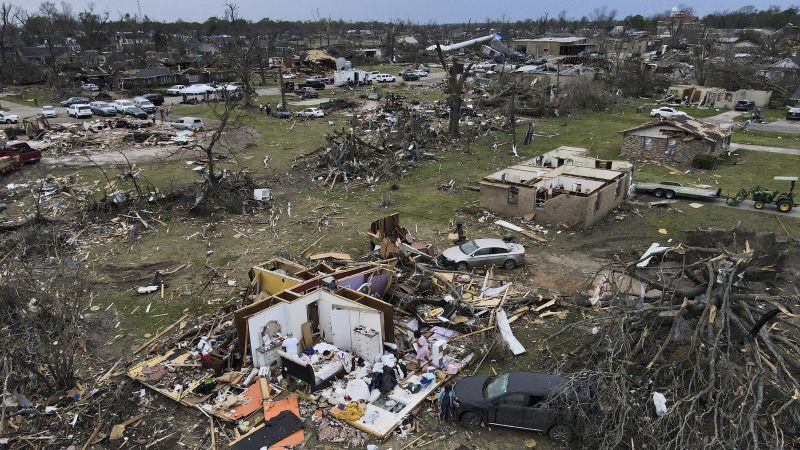
Editor’s Note: A version of this article originally appeared in the weekly weather newsletter, the CNN Weather Brief, which is released every Monday. You can sign up here to receive them every week and during significant storms.
Over the weekend, Twitter reversed course on what would have been a bad idea. And yes, it revolves around weather.
Since Elon Musk took over, the company has received mostly bad press, and this week’s Weather Brief was going to be about another controversial decision.
But over the weekend, a surprise reversal caused many in the weather community to breathe a collective sigh of relief.
In February, Twitter announced it would limit the number of tweets that can be sent from automated accounts, unless they pay extra, in a move it said was intended to “increase quality, reduce spam, and enable a thriving ecosystem.”
The change would have a huge impact on the National Weather Service and other weather entities using automated tweets to send crucial weather alerts, like tornado warnings.
“The reason the automation exists is so that the people at the office don’t have to worry about redundantly issuing a tornado warning, then going on to Twitter, and then retyping the same thing,” Daryl Herzmann explained. Herzmann is a systems analyst for Iowa Environmental Mesonet and helped create the automation software used on Twitter.
The real-time nature of Twitter is appealing to users when getting lifesaving warnings out on social media, versus a platform like Facebook which could, using algorithms, pop up a post from four days before, and cause confusion in a weather-type scenario.
Herzmann explained Twitter was going to only allow 50 automated tweets in a 24-hour period. To put it in perspective, his account issued about 16,000 automated tweets on a slow weather day and issued 28,000 on April 4, the day the Midwest was hit with nearly 30 tornado reports.
“Without this automated process, it would take minutes for forecasters to manually prepare warning information into a tweet. For every warning issued, seconds could make the difference between life and death,” said NOAA in a statement to CNN.
Many of the weather service offices took to Twitter, including the weather service’s tsunami alert account, explaining the situation and urging people to make sure they have other ways to receive weather warnings.
Twitter, which laid off much of its public relations team after Musk took over last year, did not respond to a request for comment.
“Since Elon has basically gutted all the employees, it’s impossible to interact with them at a technical level,” explained Herzmann. “It’s very frustrating.”
Twitter originally said there would be no exceptions to its ruling to limit the number of automated tweets. But in a surprising move over the weekend, Twitter has reversed course, saying in a tweet “Twitter will allow the National Weather Service accounts to continue Tweeting weather alerts without limits.” The move highlights the importance of weather alerts. Weather warnings save lives.
It is a huge win for the weather community, and maybe a sign Twitter is listening.
“When the NWS issues a warning, it means there is an imminent threat of hazardous weather. Minutes, even seconds, can make a difference between life a death,” said Alexandra Kelly, a Regional Warning Coordination Meteorologist for the weather service. “The quicker that people receive weather warnings, the quicker they can take action to protect themselves and their families.”
“I am glad Twitter reversed course and made an exception for the vital services provided by the National Weather Service,” Herzmann told CNN after he heard the news. “It does continue to be of concern that Twitter can make wild changes like this and not fully consider the implications of their changes.”
Herzmann’s account, which sends automated tweets, still has restrictions but he remains hopeful Twitter will reconsider his accounts as well.
While Twitter is just one way people can receive alerts, it is important to make sure you have multiple ways to receive important weather information. Whichever way you rely on to get severe weather alerts, make sure they will wake you up if you are sleeping.
The two best ways to receive weather information:
- On your smartphone: Wireless emergency alerts are one of the best ways to receive tornado warnings anytime, anyplace. In an iOS device go to settings, then notifications, and scroll to the bottom. Make sure emergency alerts – listed under government alerts – are clicked on. If you use a third-party app, be sure the alerts are issued in a timely fashion. Most importantly, have those notifications ON.
- NOAA Weather Radio: While it may sound old-fashioned, a weather radio will provide you with up-to-date information straight from your nearest National Weather Service forecasting office.
"Stop" - Google News
April 18, 2023 at 12:48AM
https://ift.tt/6d9cq8R
Twitter's plan to stop automated emergency weather tweets highlights the value of alerts - CNN
"Stop" - Google News
https://ift.tt/9Tgcmuj
https://ift.tt/DpAq1IV
Bagikan Berita Ini















0 Response to "Twitter's plan to stop automated emergency weather tweets highlights the value of alerts - CNN"
Post a Comment